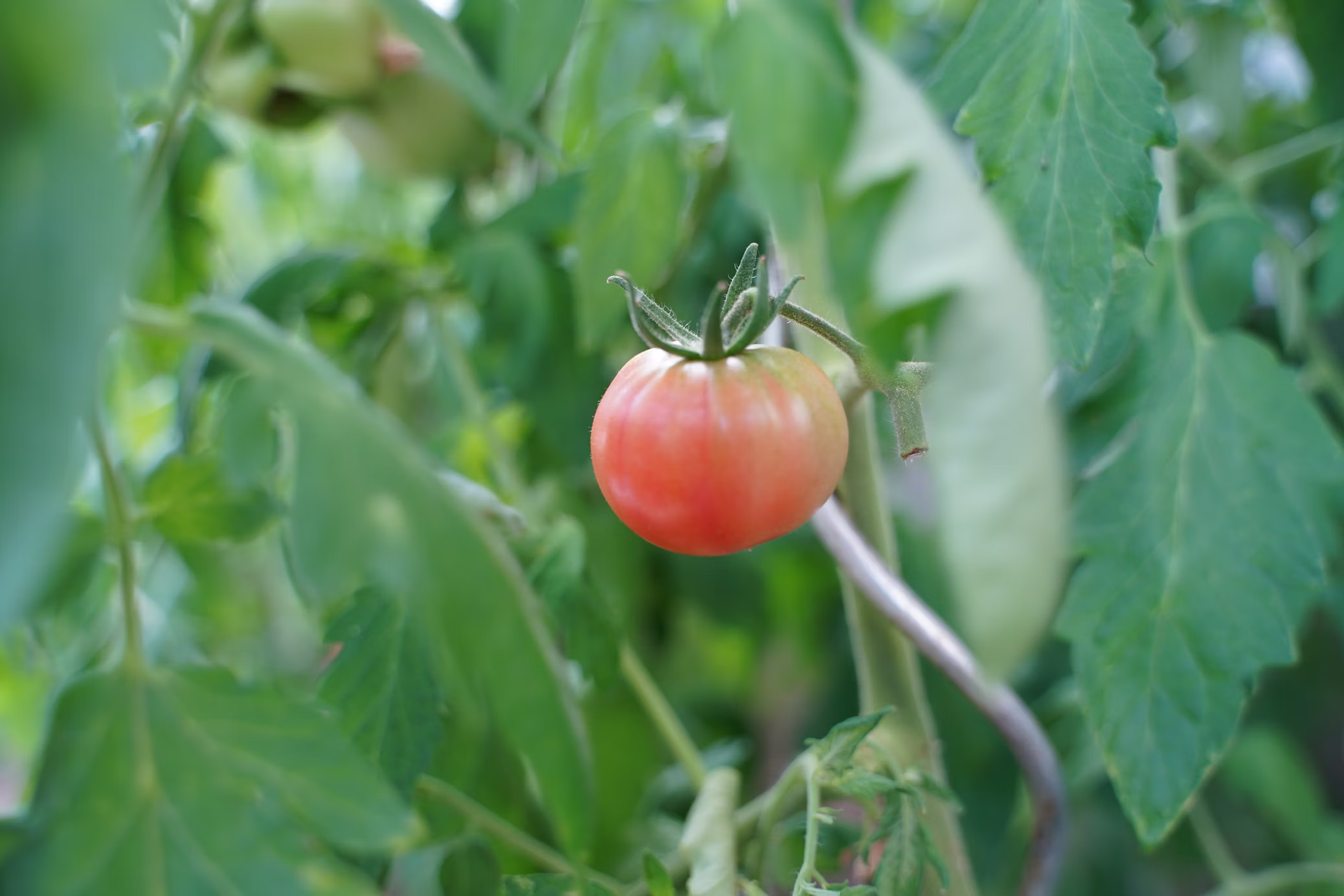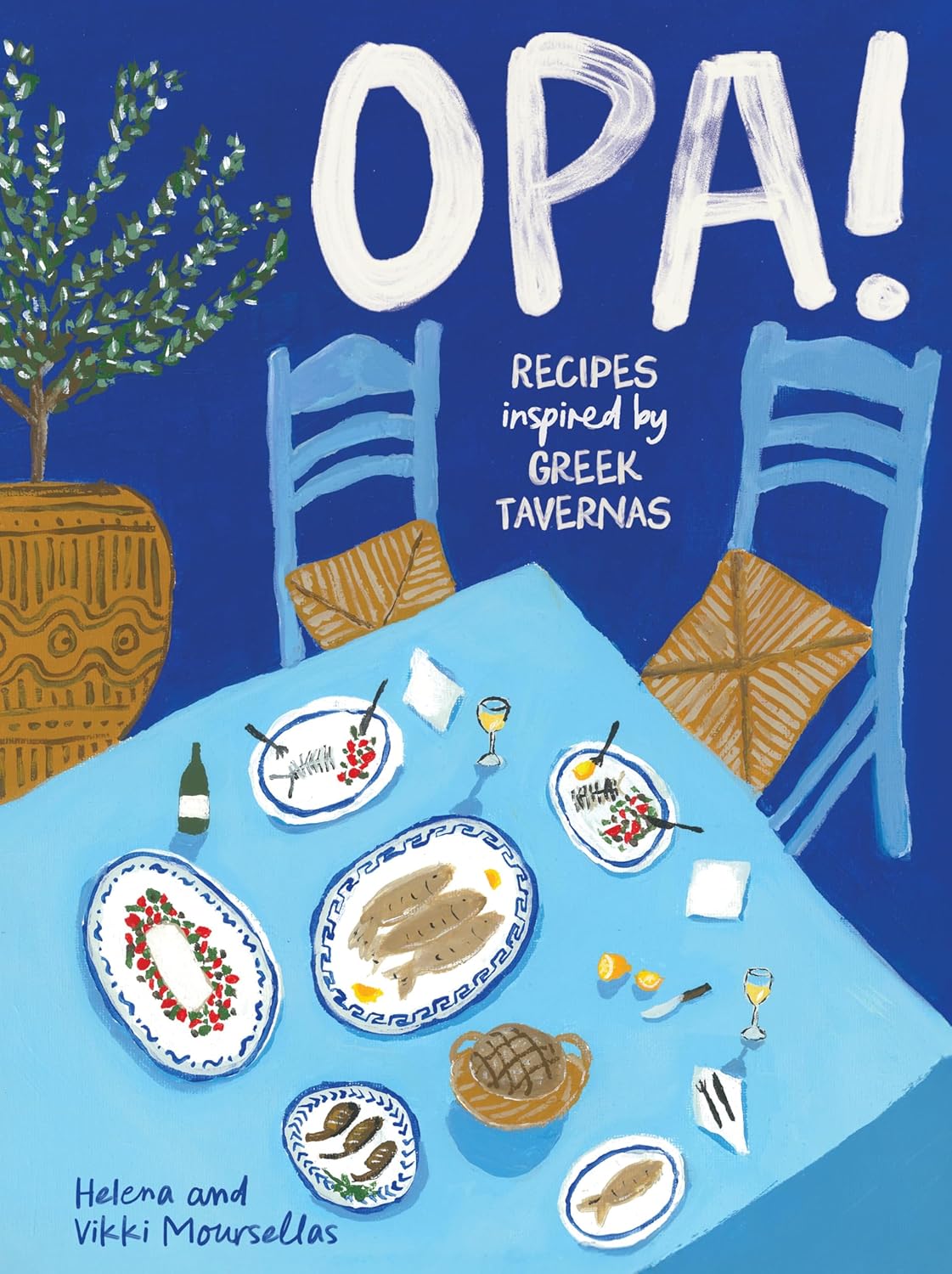Greece, tomatoes.... AGAIN

Rain at last. I woke at six and went into the garden to see my plants looking…erect. They've been so slumped, like bored teenagers in a hot stuffy classroom but now they seem happier and fresher. The tap water in Suffolk is very hard, filled with calcium and magnesium that remain as white blotches on every leaf. It is ugly and can’t do them much good. Our tomatoes are nearly ripe with visibly swelling fruit requiring a good water 2-3 times a day. We have seven different varieties in our tiny garden: Peche Vilmorin, Blue Beauty, Cherokee Purple, Syrian Stuffer, Indigo Rose, Rebel Starfighter, and Green Zebra. Their names are fantastic. I’d love to get to name plants.
I mentioned seeing Claire Thomson’s Tomato Cookbook at Santorini’s Tomato Industrial Museum last month. If you are looking for more recommendations, try Samuel Goldsmith’s Tinned Tomato Cookbook, William Alexander’s Ten Tomatoes that Changed the World: A History and The Big Red Book of Tomatoes by Lindsay Bareham.
I’m planning to make Gayalet Bandora, a simple Palestinian dish of tomatoes cooked with olive oil, pine nuts, chilli peppers, garlic, and parsley. Zaytoun olive oil is beautiful. And a traditional Southern-style tomato sandwich is a staple in our house— simple, homely, you think—until you ask more than one Southerner how it should be made. “As Guy Clark sings, 'There's only two things that money can't buy, and that's true love and homegrown tomatoes,” says Mason Hereford from Turkey & The Wolf on the subject, although a really good, ripe store tomato bought at the height of the growing season is just fine. I do love reading about tomato sandwich rules, and am happy to let Bitter Southerner have the last word while I get on with making my sandwich.
This I did not know:
I was overjoyed to receive a copy of OPA!: Recipes inspired by Greek tavernas by Helena Moursellas and Vikki Moursellas so soon after our Greek holiday; twenty minutes into reading, I leapt up to prepare and cook a pan of their Patates Lemonates (lemon potatoes). Greeks are quite simply the best potato cooks in the world because 1. their potatoes are high quality, and 2. they know when to leave things alone. They don’t gild the lily. Since then, I have made their Kolokithokeftedes (courgette fritters), Revithokefetdes (chickpea fritters with minty yoghurt) using jars of Queen chickpeas from the Bold Bean Co, their sour cocktail made with ouzo, lemon juice and olive oil, and an enormous bowl of Beetroot with Mizithra Cheese. The cover illustration is divine; look at it:

A few other recommendations for Greek cookbooks all of which feature tomatoes, if I have wetted your appetite:
The Foods of Greece by Aglaia Kremezi won a Julia Child award; it is foundational. Here’s an interview with Aglaia.
Peináo: A Greek feast for all: Recipes to feed hungry guests is Helena Moursellas and Vikki Moursellas’s first cookbook.
Prospero’s Kitchen: Island Cooking of Greece by Diana Farr Louis and June Marinos takes you on a trip around the Ionian islands via recipes collected from family notebooks and oral testimony. There’s a recipe for Quail-Stuffed Eggplant Klephtic-Style (!) from the Klephs, an outlawed band of men who had to cook whilst on the run from Greek authorities. The Ionians never came under Ottoman rule but were colonised by the Venetians. Their cooking can be quite different.
The Cookbook of the Jews of Greece by artist and scholar Nicholas Stavroulakis traces over 2000 years of history through illustrations, recipes, and writings, amassed from the oral testimonies of Jewish elders across Greece.
The simply wonderful Georgina Hayden’s Nistisima (a delicious and moving exploration of Greek fasting food), Taverna, and Greekish are foundational. Her yellow split pea puree (fave) accompanies me to nearly every food-related gathering; it’s practically a member of my family now.
Carolina Doriti’s Salt of the Earth is another go-to, and I’m keen to read her latest, The Greek Islands Cookbook. The photography is gorgeous: sidereally delicate caper flowers, slender violet-flushed globe artichokes, a dish of blended, spiced persimmon with saffron and bee pollen that glows like the sun, fimbriated courgette flowers for sale at the market….Her recipes are clever. Some of my favourites are Stuffed Baked Quince in a Spiced Brandy and Rose Syrup, A pasta recipe of bucatini topped with a fried egg and grated Mizithra cheese from Mani in the Peloponnese that is similar to cacio e pepe, and her version of the ancient Tzaletia, a corn and currant pancake with apple and honeycomb.
Aegean: Recipes from the Mountains to the Sea by Marianna Leivaditaki is both beautiful and useful, also endorsed by Allan Jenkins ('A delicious evocation of place and memory from one of my favourite cooks.’)
Cypriana: Vibrant recipes inspired by the food of Greece & Cyprus by Theo. A. Michaels mixes family recipes with modern restaurant-inspired cooking. His ‘Filo Sharer’- layers of pastry filled with citrus yoghurt and Metaxa cherries is a fantastic idea.
And some online reading:
“….Because there was a time when, if they did pass up free weeds, they would have died of starvation.
Whenever I brought a bowl of horta to older Greeks—the ones from the Old Country who survived the war—I always wondered if its presence at their table was practical or symbolic or both. Did they order it because they simply need the roughage at their age, or were they paying homage to the very thing that may have helped them beat hunger—and the Nazis—and come out of World War II alive?
I never dared to ask,” writes Horta Culture, a remarkable essay about horta, the foraged greens served all over Greece.
I have written about horta too for my food column and included a recipe for a traditional-style pie stuffed with greens and cheese.
A downloadable PDF of ancient Hellenic recipes here.
An article from 2022 by Olly Smith on Greek wine, and a piece about four ancient indigenous grape varieties.
Katherine Whittaker writes about the mastic tree for Saveur.
Anastasia Miari travelled around Greece collecting recipes and stories from its famous yiayias for her cookbook, Yiayia: Time-perfected Recipes from Greece's Grandmothers. She tells House & Garden about her process.
This Delicious Legacy podcast about the cuisine of the Black Sea Greeks is fascinating.
I want to make blackeyed peas with spinach and these Santorini tomato fritters. I ate so many of these on holiday recently. Guardian Feast has great tomato recipe roundups here.
My bookshop.org links will earn me a small commission if you buy from them.
Topographic Kitchens is a reader-supported publication. To receive new posts and support my work, consider becoming a free or paid subscriber.



